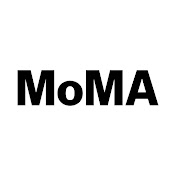
Four Thousand Images
1993
Stella Waitzkin
American, 1920-2003
Elizabeth A. Sackler Center for Feminist Art
Stella Waitzkin found her creative voice building elaborate personal environments in her apartment in the Chelsea Hotel and house on Martha’s Vineyard. A lover of books as objects and metaphors for intellectual freedom, Waitzkin collected thousands of volumes and cast them in resin, rendering them into unreadable sculptural abstractions, and built ambitious installations of freestanding bookcases and library walls to house them. She also cast human faces and other household objects to embellish her environments. In the avant-garde atmosphere of the downtown art scene of the 1970s, Waitzkin also made political performances, taking to heart Robert Rauschenberg’s famous advice that artists should “live at the intersection of art and life.”
Waitzkin became an artist while raising a family in Great Neck, New York, taking the train into the city to study painting with Hans Hofmann and drawing with Willem de Kooning. After her divorce, the artist moved to New York City, where, in spite of the friendships she forged with artists Franz Kline, Malcolm Morley, Louise Nevelson, and Larry Rivers, she became increasingly suspicious of the art world, withdrawing over the decades into her work and the environments she created.
Waitzkin became an artist while raising a family in Great Neck, New York, taking the train into the city to study painting with Hans Hofmann and drawing with Willem de Kooning. After her divorce, the artist moved to New York City, where, in spite of the friendships she forged with artists Franz Kline, Malcolm Morley, Louise Nevelson, and Larry Rivers, she became increasingly suspicious of the art world, withdrawing over the decades into her work and the environments she created.
- Maker/Artist
- Waitzkin, Stella
- Classification
- Sculpture
- Formatted Medium
- Polyester resin
- Dimensions
- 48 x 70 x 12 1/2 in. (121.9 x 177.8 x 31.8 cm)
- Departments
- Elizabeth A. Sackler Center for Feminist Art
- Accession Number
- 2012.69
- Credit Line
- Gift of Agnes Gund, New York
- Exhibitions
Have a concern, a correction, or something to add?













